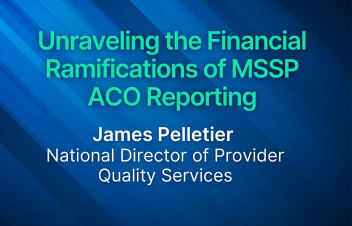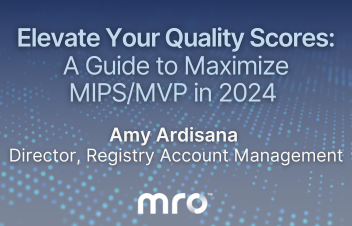
Recently, I had the pleasure of moderating a panel discussion between Health Information Management (HIM) experts, discussing HIM today and the funny lessons learned this past year. As I’m sure many of us can relate, since the COVID-19 pandemic in 2020, life looks different in many ways.
Patient satisfaction from virtual visits with their healthcare providers appears to be comparable to traditional in-person visits. While patient satisfaction is on the rise, so is employee satisfaction for remote workers. The advantages of permanent virtual or hybrid departments, such as reduced costs and positive environmental impacts, outweigh the obstacles. The COVID-19 pandemic proved the effectiveness of virtual departments implemented by our nation’s businesses. However, for HIM departments, the considerations are more complex. These include multidisciplinary analysis of privacy and security, substantive workflow changes, and addressing communication challenges. Together, our panel outlined telehealth strategies, lessons learned, and the post-pandemic status for large health system HIM departments with very different support strategies. We discussed the evolution of HIM departments and the lessons learned as they created permanent and sustainable virtual extensions of their departments. Finally, we offered insights on strategic and tactical approaches for the HIM department’s remote workforce to include a more formal, sustainable, virtual program.
A few discussions are worth calling out. The first is leadership and motivation. Our panelists discussed how they’ve kept their teams engaged and motivated in a virtual environment, including some challenges they faced.
Sherine Koshy: So, we do weekly meetings, checking in with the operations team and the coding team, once a week. Additionally, those teams also have their own group check-ins. We typically will use Microsoft Teams and One Note together, so that we can share thoughts and agendas. Everyone can provide their input ahead of time so we feel connected, communicative. Since we do not have a mandated physical presence every day, I do try to get my team together in person from time to time. I tell them that if they do come in, I’ll buy lunch, since it’s so nice to actually get together in person every once and while. We try to do this in person meet up at least quarterly, especially then during the holidays.
Kim Suggs: Actually, for my large, centralized, coding team, I was fortunate in that they were already remote. However, with that said, as part of our concern about the great resign in addition to everyone’s situations at home changing, we did expand on some of the simple activities that we were already doing. For example, my leadership team for coding has an 8:00am morning huddle every day, Monday through Friday. That’s where we all get the opportunity to touch base. We talk about what everyone’s status is as far as volume and scope of work as well as shifting resources. But we did implement quite a few new activities like coffee breaks in the afternoon using a virtual video platform. And there were specific rules for those types of things such as a certain amount of time that there was no discussion of work. It was all just personal updates like on babies, weddings, anniversaries, that sort of thing. During the pandemic, we actually started having a Christmas sock swap, and now we do it every December. We all draw names, kind of like a Secret Santa, but the only gift to give was a pair of Christmas socks. The more entertaining that they were, the better. One of our coding directors is also really good about pulling together a quarterly newsletter for the group, where things like new associates, updates, pictures, things like that. Now, my teams that are actually in-office do similar types of activities to build camaraderie.
I think the camaraderie and team building in a virtual environment is one of the hardest pieces. Specially at times when some people reacted to the pandemic worse than others. One of the things that I did for one of my teams was I had blocked off their calendar and they had no idea why. It was a Friday afternoon and I said we were having this virtual strategy meeting. And what I ended up doing was booking a virtual escape room. The company I selected emailed to make sure that certain things were set up that I had to do on the sly. My team absolutely loved it, they had to use their brains and they were divided into teams, working together to “escape” the room. It was a great way to virtually get together just because. So, thinking outside the box and seeing what else is available out there, I think is also a great way to build that camaraderie.
Another important topic of discussion was benchmarking and productivity measurements.
Sherine Koshy: So, for us, coders were always remote, so they had the policies, procedures, and productivity goals to hit. We really took those pieces already in place for the coding team and applied it to the rest of the teams. Then, all teams had accuracy measures and requirements that they needed to meet.
Kim Suggs: Really similar to what Sherine and her team did, we already had policies, procedures, goals and specific benchmarks from a coding perspective, so there wasn’t really a lot of change for them. But for the HIM departments, in some cities we did send home our identity management or MPI folks. They went to work from home, and most of them are still working remotely. Again, we just took the same benchmarks that we were already using and the policies that we already had in place, and used those, of course, with some necessary tweaks. We also sent our team of analysts home from the HIM departments, and production actually improved. It appears so much easier for them to meet certain benchmarks and go above and beyond expectations by being remote. We saw that for a lot of people in our organization.
As a panel, we discussed many more topics, with lots of great input from live webinar attendees. I encourage you to request the playback of the entire panel discussion to gain insights on the good, the bad, and the funny lessons learned in HIM throughout 2022.


